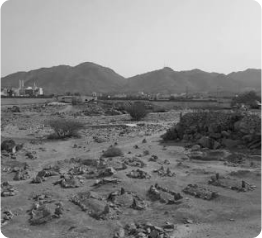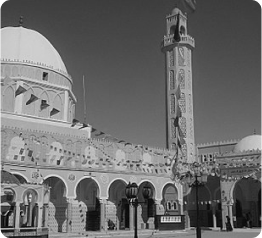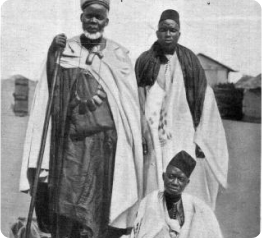By Zakariya Wright
Gifted with gnosis and consummate sainthood, Sidi Ali Harazim was known as the greatest inheritor (khalifa) of Shaykh Ahmad Tijani, and was commended to the Shaykh by the Prophet Muhammad himself. In a waking vision, the Prophet told the Shaykh, “He is for you what Abu Bakr was for me.” In another vision, the Prophet said, “O Ahmad, consult with your greatest servant (khadimik al-akbar) and your beloved, Harazim, for he is for you what Aaron was for Moses.”
Sidi Ali first met Shaykh Tijani in Wajda (or Oujda, Eastern Morocco) while the latter was en route to Fes after returning from Hajj. Both had received knowledge from God that he was to be associated with the other, but Sidi Ali did not immediately recognize Shaykh Tijani until the Shaykh said, “You have been told that your shaykh on the path will be a certain Shaykh Ahmad Tijani.” Much surprised at the stranger’s ability to guess the content of his previous dreams, Sidi Ali replied, “Yes, that is so.” Shaykh Tijani then said, “I am he.” At this time Shaykh Tijani had not yet received his own Tariqa Muhammadiyya from the Prophet, so Shaykh Tijani instructed him in the Khalwati way.
Sidi Ali accompanied the Shaykh when he settled in Fes (1798), and was responsible for composing the Jawahir al-Ma’ani, which remains the primary source of Shaykh Tijani’s life and teachings. Of this book, the Prophet told Shaykh Tijani, “This book belongs to me”; and concerning the words of Sidi Ali more generally, the Shaykh used to say, “What my khalifa says, I also say that.” He is similarly reported to have said of Sidi Ali, “No one will receive anything from me except by way of Sidi Harazim.” Although he died before Shaykh Tijani, Sidi Ali is still considered the greatest spiritual successor among the Shaykh’s companions, even if the greatest successor alive at Shaykh Tijani’s own passing was Sidi Ali Tamasini.
After receiving the greater illumination (fath al-akbar), the Shaykh sent Sidi Ali Harazim to accomplish his pilgrimage to Mecca and to visit the Prophet Muhammad in Medina. Many miracles (karamat) and spiritual unveilings are reported on this journey, which we are not inclined to mention here. But it is clear his lofty spiritual zeal (himma) touched many who encountered him on this journey, among whom was Shaykh al-Islam Ibrahim Riyahi of the Zaytuna University who hosted Sidi Ali for several months in Tunis. Shaykh Riyahi was no doubt inspired from meeting Sidi Ali to visit Shaykh Tijani himself on a later trip to Fes.
After accomplishing the Hajj, Sidi Ali went to visit the tomb of the Prophet. When he arrived in Badr on the way to Medina, he was overcome by love for the Prophet and fell into such a deep spiritual state (hal) that he came to be buried among the martyrs at Badr. At the exact moment of his burial, Shaykh Tijani told his companions in Fes, “If they did not bury him, they would hear from him sciences, gnosis and secrets such as they have never heard before and have never found in any book.” His grave at Badr is no longer distinguishable, like many other tombs destroyed in the last two centuries. But Shaykh Hassan Cisse, when visiting Badr some years ago, reports having been indicated the exact spot in a visionary encounter with Sidi Ali Harazem himself.
Sources: Ahmad Sukayrij, Kashf al-Hijab; interviews with Shaykh Hassan Cisse




